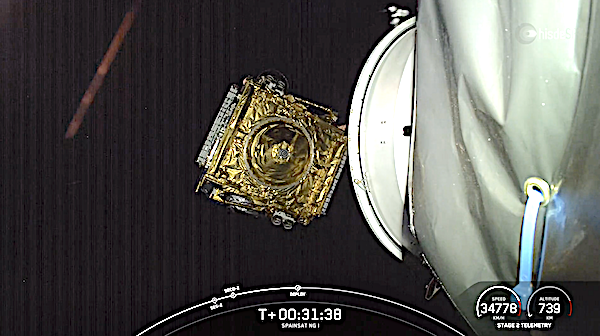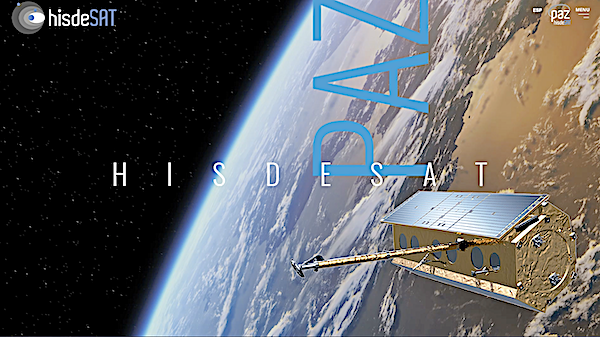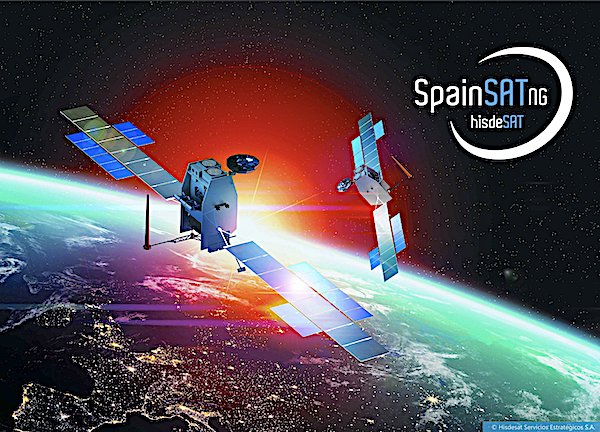
SpaceX on Wednesday launched the Spanish communications satellite Hisdesat SpainSat NG I atop a Falcon 9 rocket from Launch Complex 39A (LC-39A) at Kennedy Space Center in Florida. Liftoff of the Falcon 9 rocket from Launch Complex 39A happened at 8:34 p.m. EST (0134 UTC), the opening of a two-hour window.
The SpainSat New Generation 1 (SNG 1) satellite is supported by the European Space Agency (ESA) and manufactured by Airbus Defense and Space.

Due to the additional performance required to deliver this payload to orbit, this will be the 21st and final flight for the Falcon 9 first stage booster supporting this mission, which previously launched SES-22, ispace’s HAKUTO-R MISSION 1, Amazonas-6, CRS-27, Bandwagon-1, GSAT-20, Thuraya-4, and 13 Starlink missions.
SpaceX ready for SpainSat NG1’s launch tomorrow from Kennedy

SpaceX is targeting Wednesday, January 29 for a Falcon 9 launch of the Hisdesat SpainSat NG I mission to geosynchronous transfer orbit from Launch Complex 39A (LC-39A) at Kennedy Space Center in Florida. The two-hour window opens at 8:34 p.m. ET. If needed, a backup opportunity is available on Thursday, January 30 at the same time.
A live webcast of this mission will begin about 15 minutes prior to liftoff, which you can watch here and on X @SpaceX. You can also watch the webcast on the new X TV app.
Due to the additional performance required to deliver this payload to orbit, this will be the 21st and final flight for the Falcon 9 first stage booster supporting this mission, which previously launched SES-22, ispace’s HAKUTO-R MISSION 1, Amazonas-6, CRS-27, Bandwagon-1, GSAT-20, Thuraya-4, and 13 Starlink missions.
SpaceX to launch SpainSat NG I on Wednesday

SpaceX is scheduled to launch SpainSat NG I on Wednesday, January 29th, from 5:34 – 7:34 pm PST from Kennedy Space Center, Florida. The forecast calls for a temperature of 63°F, overcast clouds, 100% cloud cover and a wind speed of 3mph.
The SPAINSAT NG I and II satellites, with an operational useful life of 15 years remaining in service until 2037, will be located at positions 30ºW and 29ºE, and will cover an extensive world area that ranges from the United States and South America, to the Middle East, including Africa and Europe and reaching Singapore on the Asian continent involving X, Ka Mil and UHF bands.
The mission is to:
- Ensure effective command and control in operations of the Armed Forces beyond the line of sight in 2/3 of the Earth.
- Guarantee communication capacity in theaters of operations lacking infrastructure.
- Develop more satellite communications in motion, greater capacity and security.
- Unlocking the potential of the battlespace-netcentric warfare and operations core network.
They incorporate advanced protection technologies against interference attempts (anti-jamming) and spoofing (anti-spoofing), and will be reinforced and protected against nuclear phenomena at high altitude.
